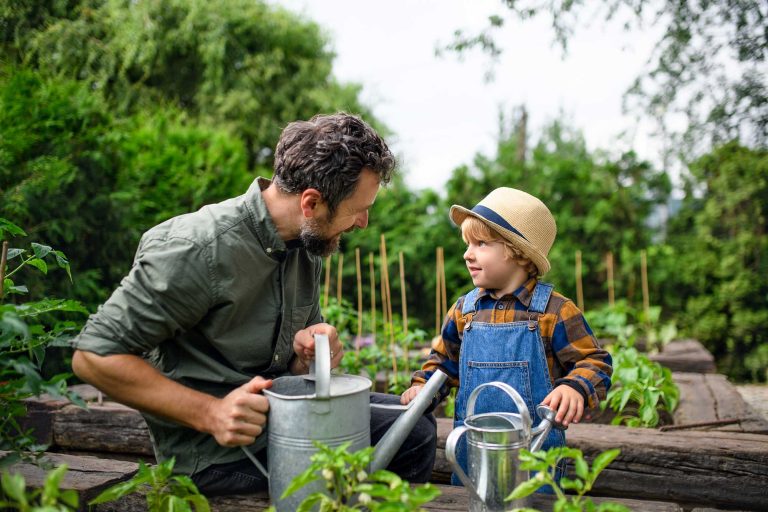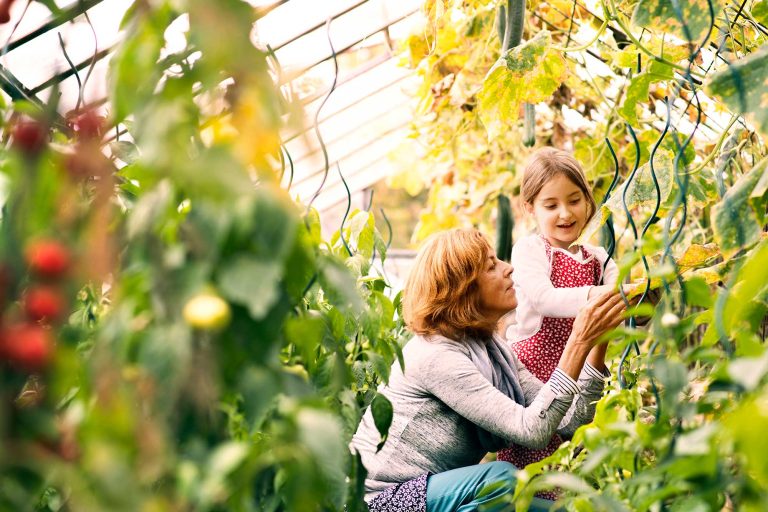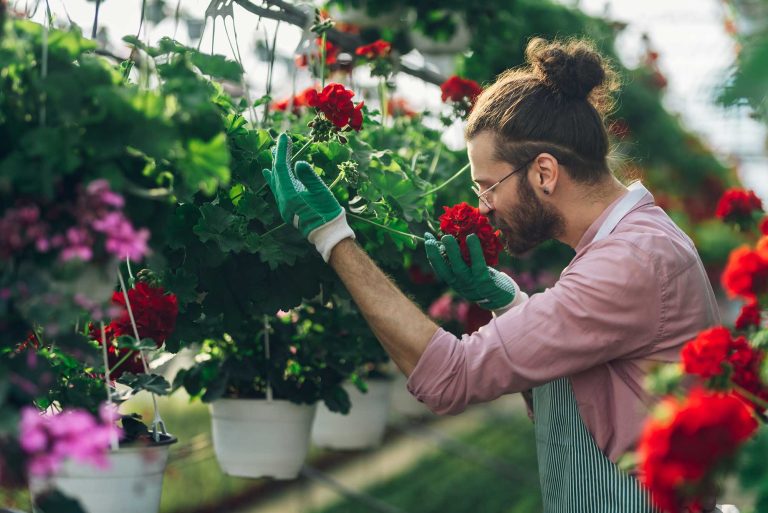Imagine stepping into your kitchen and plucking fresh basil or mint leaves right from your own indoor herb garden. Sounds delightful, doesn’t it?
Creating your own indoor herb garden is not only a rewarding hobby but also a practical way to ensure you always have fresh ingredients at your fingertips. You don’t need a green thumb or a lot of space; you just need a little guidance and some enthusiasm.
You’ll discover how easy it is to start your own indoor herb oasis, enhancing your cooking and bringing a touch of nature inside your home. Whether you’re a seasoned gardener or a complete novice, this guide will show you how to transform a small corner of your home into a thriving herb paradise. Keep reading to uncover the secrets of successful indoor gardening that will bring your favorite dishes to life with flavors you’ve grown yourself.
Choosing The Right Herbs
Selecting the right herbs for your indoor garden is essential. Consider sunlight and space before choosing. Basil, mint, and thyme thrive indoors.
Choosing the right herbs is essential for a successful indoor herb garden. Herbs come with unique flavors and needs. Picking the right ones ensures your garden thrives. Consider your cooking habits, available space, and climate. Some herbs demand more light, while others are low-maintenance. This guide will help you select herbs that suit your environment and culinary preferences.Popular Herb Options
Many herbs are ideal for indoor growing. Basil is a favorite for its sweet aroma and flavor. Mint is versatile, perfect for teas and desserts. Rosemary adds a robust taste to dishes. Thyme is another great option, known for its earthy flavor. Cilantro and parsley are common for garnishes and salads. Chives are excellent for adding a mild onion flavor. Each herb has its own charm and use in cooking.Considering Climate And Space
Your indoor climate affects herb growth. Some herbs need lots of sunlight. Basil and rosemary thrive in bright spots. Mint and chives can grow in less light. Space is another factor. Compact herbs like thyme fit in small areas. Large pots suit sprawling herbs like mint. Consider your home’s humidity. Sage prefers dry conditions. Cilantro likes more moisture. Tailoring your choices to your environment helps your garden flourish.
Credit: www.harvestingqualitythyme.com
Selecting Containers
Choosing the right containers is crucial for a thriving indoor herb garden. Opt for pots with good drainage to prevent root rot. Ensure the containers are large enough for growth but small enough to fit your space.
Creating your own indoor herb garden is a rewarding endeavor that brings fresh flavors and greenery into your home. One of the crucial steps in this journey is selecting the right containers. The containers you choose will not only affect the aesthetics of your space but also the health and growth of your herbs. Let’s dive into how you can make the best choice for your herbal oasis.Types Of Containers
Your choice of container can be as diverse as the herbs you plant. Clay pots are a popular choice due to their natural look and breathability, which helps prevent overwatering. Plastic containers, on the other hand, are lightweight, affordable, and available in a variety of colors and sizes. For those who love a rustic touch, wooden boxes can add charm and warmth to your space. They also provide good insulation for the roots. If you’re short on space, consider vertical planters or hanging baskets that can transform any wall or ceiling into a lush herb garden. Have you considered repurposing household items like old mugs or tin cans for a creative twist?Drainage Considerations
Proper drainage is vital to prevent root rot and ensure your herbs thrive. Ensure each container has a drainage hole at the bottom. Without this, water can stagnate, drowning your herbs. You can also use pebbles or gravel at the base of your container to improve drainage. This simple addition creates a layer that helps excess water escape. Wondering how to manage drainage in containers without holes? Consider using a self-watering pot or lining the bottom with absorbent materials like a sponge or coffee filter. These techniques can keep your herbs healthy and happy, even if you sometimes forget to water them. Choosing the right container is more than just a practical decision; it’s an opportunity to express your personal style and make your herb garden uniquely yours. So, what will your choice say about you?Preparing Soil Mix
Crafting a soil mix for an indoor herb garden is simple. Combine equal parts of potting soil, perlite, and compost. This blend ensures herbs receive proper nutrients, drainage, and aeration for healthy growth.
Preparing the perfect soil mix is crucial for a thriving indoor herb garden. A good mix provides essential nutrients and maintains proper drainage. It ensures your herbs grow strong and healthy indoors.Essential Nutrients
Herbs need specific nutrients for optimal growth. Essential nutrients include nitrogen, phosphorus, and potassium. Nitrogen promotes leafy growth, which is vital for herbs. Phosphorus helps in root development and flowering. Potassium strengthens plant resistance against diseases. Additionally, magnesium and calcium support overall plant health. A balanced soil mix provides all these nutrients.Organic Vs. Synthetic
Choosing between organic and synthetic soil mixes can be challenging. Organic mixes use natural materials like compost and manure. They improve soil structure and encourage microbial activity. Organic materials release nutrients slowly, providing long-term benefits. Synthetic mixes contain chemical fertilizers and additives. They often offer quick nutrient release. However, they may not support beneficial soil organisms. Both options have pros and cons, depending on your preferences and needs. Consider the environmental impact and your commitment to sustainability.Optimal Lighting Conditions
Creating your own indoor herb garden is a rewarding venture, but ensuring optimal lighting conditions is crucial for healthy growth. Herbs need light to thrive, and understanding the difference between natural and artificial light can make a significant impact on your garden. Additionally, knowing how to position your plants for best growth will ensure they receive the light they need to flourish.
Natural Vs. Artificial Light
Natural light is generally the best option for your indoor herbs. If you have a sunny windowsill, this could be the perfect spot. However, not all homes have sufficient natural light, especially in winter months. In such cases, artificial lighting becomes essential.
LED grow lights are a popular choice among indoor gardeners. They mimic sunlight and provide your herbs with the necessary spectrum of light. You can find these lights at most garden centers, and they’re relatively easy to set up.
Consider the intensity of light your herbs need. Basil and parsley, for instance, require more light compared to mint. You might need to adjust the distance between the light source and your plants based on their specific needs.
Positioning For Best Growth
Where you place your herb garden can dramatically affect its success. South-facing windows are ideal for maximum sunlight exposure. But what if your home lacks this? Get creative with your space.
Think vertical. Use shelves or hanging planters to capture available light. You can also rotate your pots periodically to ensure even growth, especially if light is coming from one direction.
Have you considered the seasonal changes in light? As days get shorter, your herbs might need a boost from artificial lighting. Keep an eye on how they respond and adjust their positioning accordingly.
Ultimately, it’s about observing and responding to your herbs’ needs. Have you noticed any yellowing leaves or slow growth? It might be time to reassess their lighting conditions.
Watering Techniques
Proper watering is crucial for a thriving indoor herb garden. Use a spray bottle to mist plants gently. Ensure pots have drainage holes to prevent overwatering.
Creating your own indoor herb garden is a rewarding endeavor, but mastering the art of watering can be a game-changer. Proper watering techniques ensure your herbs thrive, offering fresh flavors year-round. Let’s dive into how you can perfect this essential skill.Frequency And Amount
Understanding how often and how much to water your herbs is crucial. Most indoor herbs prefer slightly moist soil but dislike being waterlogged. A good rule of thumb is to water once the top inch of soil feels dry to the touch. Each herb type may have its own specific needs. For example, basil tends to prefer more moisture compared to rosemary, which can handle a drier environment. Adjust your watering schedule based on the herb’s specific needs and the season, as indoor conditions can vary.Avoiding Overwatering
Overwatering is a common mistake many indoor gardeners make. It can lead to root rot and ultimately kill your plants. To avoid this, ensure your pots have good drainage and use a well-draining potting mix. You might find it helpful to use pots with drainage holes and place a saucer beneath to catch excess water. This allows your herbs to absorb what they need while preventing water from stagnating at the bottom. Consider using a moisture meter if you’re unsure—this handy tool can help you gauge the soil’s moisture level accurately. Remember, a little underwatering is often less harmful than overwatering. Have you ever wondered why some of your herbs seem to thrive while others struggle? The answer might lie in these watering techniques. Adjusting your approach could make all the difference in your indoor herb garden’s success.
Credit: www.hungryhuy.com
Maintaining Herb Health
Create an indoor herb garden by choosing herbs that thrive indoors, like basil, mint, and thyme. Ensure proper sunlight, water, and soil conditions to keep them healthy and vibrant.
Maintaining healthy herbs indoors requires consistent care and attention. Healthy herbs not only look beautiful but also provide fresh flavors. To keep your indoor herb garden thriving, focus on pest control, pruning, and harvesting. These steps will ensure a long, productive life for your plants.Pest Control Strategies
Indoor gardens can still face pest problems. Common pests include aphids, spider mites, and whiteflies. Regularly inspect your herbs for any signs of pests. Use natural methods to keep pests at bay:- Introduce beneficial insects like ladybugs.
- Spray a mixture of water and mild soap.
- Use neem oil as a natural pesticide.
Pruning And Harvesting
Pruning encourages healthy growth and prevents your herbs from becoming leggy. Trim dead or yellowing leaves regularly. This helps direct energy to healthy parts of the plant. Harvesting is simple yet crucial. Pick leaves from the top to encourage bushier growth. Use clean scissors to avoid damaging the plant. Regular harvesting keeps your herbs productive and lush. For best flavor, harvest in the morning after the dew dries. This ensures the essential oils are at their peak.Creative Arrangement Ideas
Design a charming indoor herb garden with pots and planters that fit your space. Utilize vertical shelves or windowsills to maximize light exposure. Incorporate a variety of herbs like basil, mint, or rosemary for fresh flavors in your kitchen.
Creating an indoor herb garden can be a delightful project. With a bit of creativity, you can transform your space. Arranging your herbs in unique ways adds charm and functionality. Let’s explore some creative arrangement ideas.Vertical Gardens
Vertical gardens save space and add style. Use wall-mounted planters or a trellis. They let your herbs grow upwards. This method suits small spaces perfectly. You can also use hanging pockets. Arrange them in rows or patterns. This creates a green wall effect. It’s both beautiful and practical.Window Sill Displays
Window sills are great for herbs needing sunlight. Use small pots or containers. Arrange them neatly along the sill. This provides easy access and a lovely view. Choose pots of different shapes and colors. This adds a decorative touch. Ensure the containers have drainage holes. This keeps your herbs healthy and thriving.Troubleshooting Common Issues
Creating an indoor herb garden is a rewarding endeavor. Yet, challenges can arise that might test your patience. Understanding common issues and their solutions can lead to a thriving indoor herb oasis. Let’s explore how to tackle two frequent problems.
Dealing With Wilting
Wilting herbs can be distressing. Often, this occurs due to improper watering. Check the soil moisture by touching the top layer. If it’s dry, water the herbs until you see drainage from the bottom. Overwatering can also cause wilting. Ensure pots have good drainage to prevent soggy soil.
Light is another factor. Herbs need sunlight to thrive. Position them near a window where they can absorb natural light. If natural light is scarce, consider using grow lights. These can provide the necessary light spectrum for healthy growth.
Addressing Slow Growth
Slow-growing herbs may lack sufficient nutrients. Use a balanced, water-soluble fertilizer every few weeks. Follow the instructions on the package to avoid over-fertilizing.
Temperature also impacts growth. Herbs prefer warm environments. Keep them away from cold drafts or heat sources like radiators. Maintaining a consistent room temperature can promote steady growth.
Another consideration is pot size. If roots outgrow their space, transplant herbs to a larger pot. This gives roots room to expand, encouraging healthier development.

Credit: sustainablecapitolhill.org
Frequently Asked Questions
What Herbs Can I Grow Indoors?
You can grow basil, mint, parsley, and thyme indoors. These herbs thrive in indoor environments and require minimal care. Make sure they get sufficient light and water. They are perfect for adding fresh flavors to your cooking. Experiment with other herbs to find the best match for your indoor garden.
How Much Light Do Indoor Herbs Need?
Indoor herbs need about six hours of sunlight daily. Place them near a south-facing window for optimal light exposure. If natural sunlight is limited, consider using LED grow lights. Proper lighting ensures healthy growth and enhances the flavor and aroma of your herbs.
Can I Use Regular Soil For Indoor Herbs?
Regular garden soil is not recommended for indoor herbs. Use potting mix designed for indoor plants. It provides better drainage and nutrients. Garden soil may compact easily, affecting root growth and water absorption. A good potting mix promotes healthy herb growth and prevents common indoor plant issues.
How Often Should I Water Indoor Herbs?
Water indoor herbs when the topsoil feels dry. Generally, this is every 1-2 weeks. Avoid overwatering as it can lead to root rot. Ensure pots have drainage holes to prevent water accumulation. Adjust watering frequency based on humidity and light conditions in your home.
Conclusion
Creating your own indoor herb garden is simple and rewarding. Fresh herbs at your fingertips enhance meals and bring nature indoors. Choose a sunny spot. Select herbs like basil, mint, or rosemary. Use pots with drainage holes. Water regularly, but don’t overdo it.
Prune to keep plants healthy. Herbs grow quickly and need attention. With basic care, your garden flourishes year-round. Enjoy the aroma and flavor boost in your dishes. A few minutes a day is all it takes. Feel the satisfaction of growing your own herbs.
Happy gardening!







